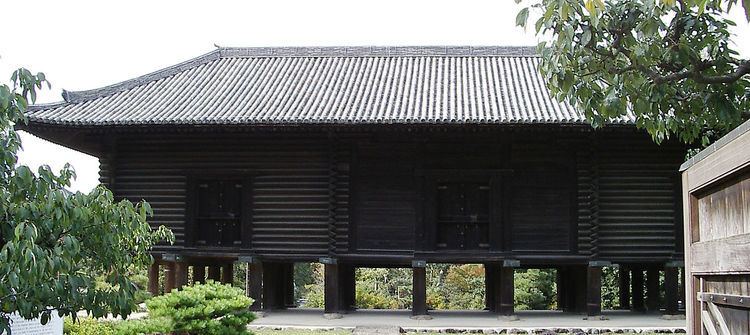An'ei (安永) was a Japanese era name (年号, nengō, "year name") after Meiwa and before Tenmei. This period spanned the years November 1772 through March 1781. The reigning emperors were Go-Momozono-tennō (後桃園天皇) and Kōkaku-tennō (光格天皇).
1772 An'ei gannen (安永元年): The era name was changed to An'ei (meaning "peaceful eternity") to mark the enthronement of Emperor Go-Momozono and in hopes of turning attention from the serial catastrophic devastation from fires and storms in Meiwa 9. The previous era ended and a new one commenced in the 11th month of Meiwa 9.1775 (An'ei 4): Epidemic diseases spread across the country – in Edo alone, an estimated 190,000 perished.1775 (An'ei 4): Swedish pyhsician and botanist Carl Peter Thunberg arrives at VOC outpost or "factory" in Nagasaki bay; and ultimately, his scientific activities will result in the first detailed, descriptive survey of the flora and fauna of the Japanese archipelago.1778 (An'ei 7): Kyoto suffers a massive flood.1778 (An'ei 7): Volcanic island of Sakurajima erupts one mile away from Kagoshima – 16,000 dead.1779 (An'ei 8): Dutch surgeon and cultural-anthropologist Isaac Titsingh arrives at Dejima for the first of three terms as Opperhoofd or captain of the VOC station; and ultimately, his seminal research will become a noteworthy step in that process in which the Japanese begin to describe and characterize themselves in their own terms. Titsingh's correspondence with William Marsden, a philologist colleague in the Royal Society in London, provides some insight into his personal appreciation of the task at hand. In an 1809 letter, he explains:Bakufu policy in this era was designed to marginalize the influence of foreigners in
An'ei Japan; however, an unintended and opposite consequence of
sakoku was to enhance the value and significance of a very small number of thoughtful observers like
Thunberg and Titsingh, whose writings document what each scholar learned or discovered first-hand. Thunberg's and Titsingh's published accounts and their unpublished writings provided a unique and useful perspective for Orientalists and Japanologists in the 19th century; and the work of both men continues to be rigorously examined by modern researchers today.
1780 (An'ei 9): Heavy rains and floods in the Kantō necessitate extensive government relief in the flood-stricken areas. 
